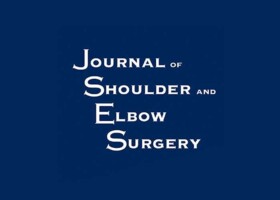
Authors:
Rutledge JC, Dey Hazra RO, Geissbuhler AR, Yamaura K, Dey Hazra ME, Hanson JA, Rupp MC, Millett PJ
Abstract:
Background:
Correction of glenoid retroversion is commonly performed in anatomic total shoulder arthroplasty (TSA) to increase component contact area and decrease eccentric loading of the glenoid component. Despite demonstrated biomechanical advantages, limited information exists on the clinical benefit of correcting glenoid retroversion. The purpose of this systematic review is to critically evaluate the existing literature on the effect of preoperative and postoperative glenoid retroversion on clinical functional and radiological outcomes in patients who underwent anatomic TSA.
Methods:
A systematic literature review was performed according to the Preferred Reporting Items for Systematic Reviews and Meta-Analyses utilizing PubMed, Embase, and Cochrane Library evaluating the impact of glenoid retroversion on clinical and radiological outcomes of TSA. English-language studies of Level I through IV evidence were included. Blinded reviewers conducted multiple screens and methodological quality was appraised utilizing the Modified Coleman Methodology Score.
Results:
Sixteen studies, including three level III and thirteen level IV studies (1211 shoulders), satisfied all inclusion criteria. To address glenoid retroversion, nine studies utilized corrective reaming techniques, and four studies utilized posteriorly augmented glenoids. Two studies utilized non-corrective reaming techniques. Mean preoperative retroversion ranged from 12.7° to 24° across studies. Eleven studies analyzed the effect of glenoid retroversion on clinical outcomes, including patient reported outcome scores (PROs), range of motion (ROM), or clinical failure/revision rates. The majority of the studies (8/11) did not report any significant association of pre- or postoperative glenoid retroversion on any clinical outcome. Of the three studies that reported significant effects, one study reported a negative association between preoperative glenoid retroversion and PROs, one study reported inferior postoperative abduction in patients with postoperative glenoid retroversion greater than 15 degrees, and one study found an increased clinical failure rate in patients with higher postoperative retroversion. Ten studies reported radiographic results (medial calcar resorption, central peg lucency (CPL) grade, Lazarus lucency grade) at follow-up. Only one study reported a significant effect of pre- and postoperative retroversion greater than 15 degrees on CPL grade.
Conclusion:
There is currently insufficient evidence that pre- or postoperative glenoid version influences postoperative outcomes independent of other morphologic factors such as joint line medialization. Given that non-corrective reaming demonstrated favorable postoperative outcomes, and postoperative glenoid version was not significantly and consistently found to impact outcomes, there is inconclusive evidence that correcting glenoid retroversion is routinely required.
You may request the complete study: Does Glenoid Version and its Correction Impact Outcomes in Anatomic Shoulder Arthroplasty – a Systematic Review

